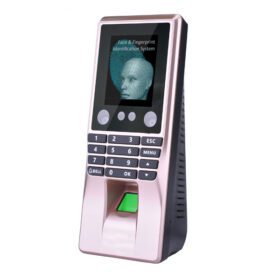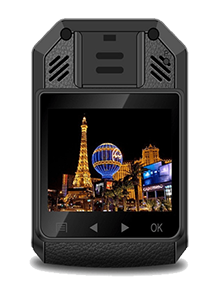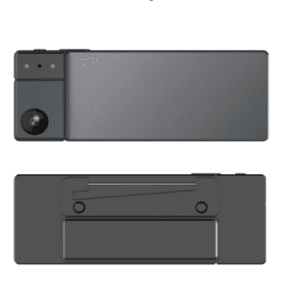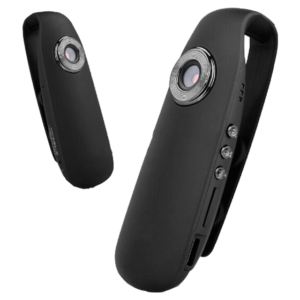wifi Body Camera for Security man or Government Outdoor worn in Public Area
The body camera is used to record the video and audio in public places, such as streets, parks, sidewalks. It can also be used in private areas like schools or offices. In other words, it records what happens when you are not at home. The most common use of a body camera is for police officers who wear them while on duty. They are also popular with private security guards and people who work in retail stores or malls where they may have to deal with difficult customers or shoplifters. For some workers this device can help protect against false accusations of theft or assault by making sure that no one will lie about their actions
Body-worn cameras (BWCs) have grown in popularity over the last decade and are now standard equipment in many police departments.
Body cameras became popular for a variety of reasons, including increased internal accountability, greater openness, simplifying public complaint investigations, and officer safety training.
However, a wide range of authorities, organizations, and corporations have recently expressed interest in how body-worn cameras could benefit their operations. In an era of tiny, portable video technology, these cameras have the potential to increase transparency and improve safety in a variety of situations.
What exactly are body-worn cameras?
So, what exactly are body worn cameras for?
Body worn cameras are small, portable devices that can be attached to headgear, helmets, or uniform collars or lapels. The base of the recording device is linked, attached to the user's clothing, and hidden in a pocket.
The batteries have an approximate lifespan of 12 hours. Even in low-light or completely dark environments, such as interiors or at night, the devices can capture high-quality video.
Video footage from those cameras is extremely useful in providing evidence and in resolving court cases.
Police body cameras are becoming increasingly popular not only in the United States, but also in other countries. They are also used in Australia, Uruguay, the United Kingdom, and South Africa.
What Kinds of Information Do Body-Worn Cameras Collect?
When users turn on their body-worn cameras, they record video and audio of people. Some include date and time stamps, as well as GPS coordinates.
Faces are frequently captured on film and could be studied by facial recognition technologies.
Some camera systems even allow officers to add metadata tags to footage while in the field using a tablet.
Police Body Cameras
Police body cameras record video and audio data that can be used to confirm incidents independently. One simple device may produce powerful evidence demonstrating the officer's contacts with the public, holding everyone accountable for their actions.
Body cameras are becoming an important tool for gathering evidence, helping to protect the public from police misbehavior while also protecting officers from false accusations of abuse and aiding in the reduction of police use of force.
These cameras allow for continuous monitoring, requiring cops to be more cautious in their actions.
These small devices provide law enforcement with a window through which to instill trust and openness. Body cameras help to prevent police abuse because officers can be easily accused of it.
The advantages of body cameras for police officers
Public trust in local and national policing has grown.
a decrease in the number of police officer complaints and allegations
Lower criminal justice costs as a result of an increase in early guilty pleas
Anti-social behavior is being de-escalated.
a decrease in the number of police officer assaults
Capability to deploy BWV in areas that are not covered by other types of CCTV
Officer skill development is accomplished through an examination of incident performance.
Officer paperwork time is being reduced.
Body Cams for Retail Applications
According to a recent Seattle Times article, many technology companies have recently demonstrated the benefits of body-worn cameras to a broader range of clients, including retail operators.
The Association of Convenience Stores (ACS) recently released their annual crime report, which highlighted several concerning retail crime trends. 72% of all retail workers have been verbally abused at work, and 39% of employees have been injured as a result of an assault or other crime, for a total of 13,437 injuries.
One of the most difficult challenges for retailers is preventing crime and dealing with the fallout when it does occur.
Employees challenging shop burglars, staff enforcing age-restricted laws, and shop workers refusing to serve alcohol to already inebriated customers are all well-known causes of staff violence.
In these circumstances, protecting vulnerable employees must be a top priority.
Reviewing video footage with team members may also be beneficial for training. New employees can learn how to present real-world events, and retraining can be done in the aftermath of an incident.
Customer service representatives may benefit from the technology as well, as they will have safer interactions with the general public.
Front-line personnel attempting to enforce the wearing of masks or social distancing within the business may encounter a customer who does not wish to do so, and such situations may arise.
More than anything else, the emphasis on staff safety has been a primary motivator in recent discussions.
Body Cameras for Campus Safety
Body-worn cameras can also assist campus safety and security organizations.
These campuses may house colleges and universities, as well as medical institutions and larger business parks.
Security personnel and other staff members who are regularly present on the premises may be outfitted with the devices.
According to the Oxford Blue, porters and junior deans on the St. Catherine's College campus will be outfitted with body cameras to aid in the enforcement of COVID-19 laws.
Previously, offenders refused to provide their names or any other identifying information while attempting to disperse students.
Campus body camera
Body-worn cameras would aid guards by collecting footage that could later be used to identify individuals who were observed violating public health standards. The cameras would also protect against hostile student behavior, which had previously been an issue.
The Fire Department Is Using Bodycams
Individuals who use aggressive behavior to obstruct firefighters or aggravate the situation are a constant source of outrage.
As a result, security and protection are more important.
Firefighters will instead use the footage to supplement training and to develop the service's fire prevention and safety activities.
The Advantages of Bodycams for Firefighters
De-escalation
Conflict reduction and prevention
Providing evidence if the situation escalates
Providing evidence to aid in the investigation of a fire
Useful for training and evaluation.
Aside from encouraging good behavior and de-escalating confrontations, wearing a bodycam as a firefighter provides a more comprehensive view of situations, providing situational awareness and potential evidence to aid in a fire investigation.
It is also an excellent tool for officers to use in evaluating their own performance and activities.
Bodycams are popular among firefighters because they improve both the safety of firefighters and the public, as well as the learning experience.
Learn How Body-Worn Cameras Can Protect Your Employees
Body-worn cameras promote open transparency in a variety of situations.
The ability to record tense interactions with customers and others can often benefit public-facing personnel. These devices will help front-line workers and other essential service providers do the necessary work to keep our communities running smoothly every day during the COVID-19 pandemic and in the future.
Body-worn cameras can also be used by retailers and other businesses to promote employee training and theft prevention initiatives.
 Contrôle d’accès
Contrôle d’accès

